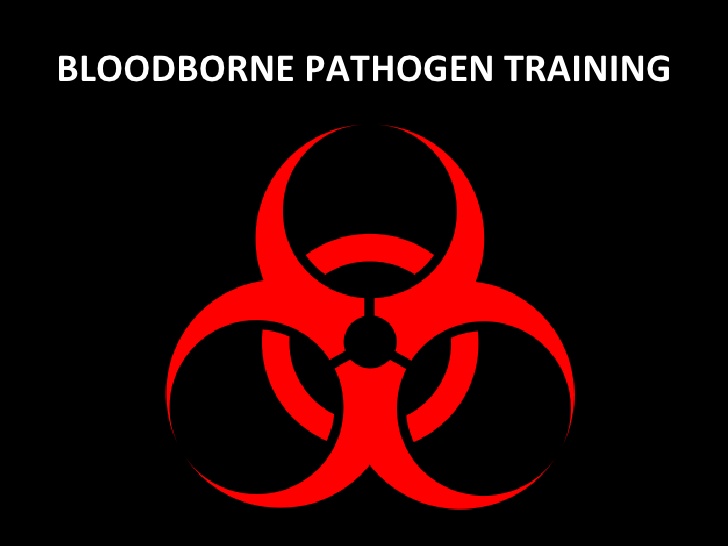BLOODBORNE PATHOGENS TRAINING
Bloodborne Pathogens Training Classes
| Audience |
*This course meets requirements established by the Occupational Safety and Health Administration |
| Description |
Main Topics Include:
|
| Duration |
|
| Certification |
|
| Class Fee |
|
Register Now
We are updating our class schedule. Please check back later.
Legal Requirements:
OSHA’s Bloodborne Pathogen Standard
Workers in many different occupations are at risk of exposure to bloodborne pathogens. First Responders, First aid team members, housekeeping personnel in some settings, and nurses are examples of workers who may be at risk of exposure.
On December 6, 1991, the Federal Occupational Safety & Health Administration (OSHA) issued the “Occupational Exposure to Bloodborne Pathogens Standard (29 CFR 1910.1030)”. Federal OSHA determined that employees have a significant health risk as the result of occupational exposure to blood and other potentially infectious materials (OPIM) because they may contain bloodborne pathogens. Theses pathogens include, but are not limited to: hepatitis B virus (HBV), hepatitis C virus (HCV), and HIV (human immunodeficiency virus).
Exposure to bloodborne pathogens can be minimized or eliminated when the development of an exposure control plan addresses and implements, at the minimum, the following elements: universal precautions, combination of engineering and work practice controls, personal protective equipment, appropriate decontamination/housekeeping, communication of hazards and training, medical surveillance which includes the offering of the hepatitis B vaccination and post-exposure evaluation & follow-up, and recordkeeping.
The exposure control plan is required to be reviewed and updated annually and whenever necessary to reflect new or modified tasks, procedures and engineering controls/devices which affect occupational exposure and reflect new or revised employee positions with occupational exposure. Non-managerial employees responsible for direct patient care who are potentially exposed to injuries from contaminated sharps are to be solicited in the identification, evaluation and selection of effective engineering and work practice controls and documentation of the solicitation is required to be included as part of the exposure control program.
Which employees are covered by OSHA’s Bloodborne Pathogen Standard?
Employees having “reasonably anticipated” exposure to blood or OPIM through skin, eye, mucous membrane, or broken skin by: (needlesticks, human bites, cuts, abrasions) that result from the performance of an employee’s job duties.
The hazard of exposure to bloodborne pathogens affects employees in many types of employment and is not restricted to the healthcare or emergency service industry.
What is the definition of blood and other potentially infectious materials (OPIM)?
Blood means human blood, human blood components, and products made from human blood.
“Other potentially infectious materials” means the following:
- Human body fluids: semen, vaginal secretions, cerebrospinal (head ), amniotic (birth fluid), peritoneal (abdomen), pericardial (heart), pleural (lung, chest), synovial (joints), saliva in dental procedures, any body fluid visibly contaminated with blood, and all body fluids in situations where it is difficult or impossible to differentiate between body fluids.
- Any unfixed tissue or organ (other than intact skin) from a human (living or dead).
- HIV-containing cell or tissue cultures, organ cultures, and HIV- or HBV-containing culture medium or other solutions as well as blood, organs, or other tissues from experimental animals infected with HIV or HBV.
How do employers determine if their employees are covered by the Bloodborne Pathogen Standard?
Each employer who has an employee(s) with occupational exposure to blood or OPIM is required to document an exposure determination. The exposure determination is made without regard to the use of personal protective equipment since employees are considered exposed even if they wear personal protective equipment.
The exposure determination requires employers to identify and document: 1) those job classifications in which all employees have occupational exposure, and 2) those job classifications in which some employee have occupational exposure.
In the latter case, specific tasks and procedures, or groups of closely related tasks and procedures, which are associated with occupational exposure, must be delineated.
(Note: Employees expected as part of their job duties to render first aid or medical assistance are covered by the requirements of the standard. If the employee is not designated nor trained in first aid but is still expected to render first aid to an injured employee or customer/client, this expectation would constitute, in affect, an actual designation of the employee and OSHA would require such employee to be enrolled in a bloodborne pathogen program. The standard excludes employees who perform unanticipated “Good Samaritan” acts; e.g. one employee may assist another who has a nosebleed or is bleeding as result of a fall. This would not be considered an occupational exposure unless the employee who provides assistance is expected to render medical assistance as one of his/her job duties.)
